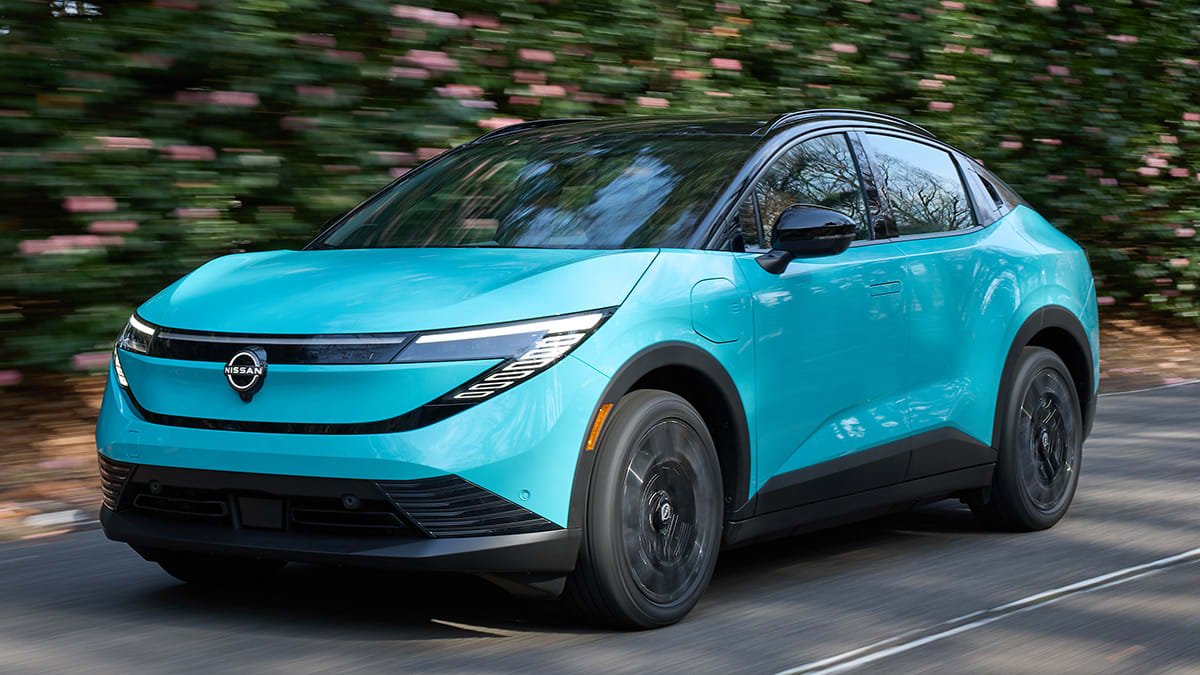The 2026 Leaf will offer two different electric powertrains. When the EV launches, the S+, SV+, and Platinum+ trims will come with a 75-kilowatt-hour battery pack and a 214-hp/160-kilowatt electric motor that drives the front wheels. Nissan’s range estimates are S+, 303 miles; SV+ 288 miles; and Platinum+, 259 miles.
A lower-priced S trim is scheduled to arrive in the spring of 2026. It will have a 52-kWh battery pack and a 174-hp/130-kW electric motor. Nissan has not released a range estimate for this powertrain.
Drivers can charge the Leaf on Level 1 and Level 2 AC chargers using the J1772 port on the driver’s-side front fender. The NACS charge port is located on the passenger’s-side front fender, allowing the Leaf to charge at Tesla Superchargers and any DC fast charger that supports the NACS standard. Nissan says the Leaf can charge at up to 150 kWh and claims that at compatible Level 3 chargers, the Leaf can go from 10 percent charge to 80 percent in 35 minutes, depending on ambient temperature, battery temperature, and other conditions.
The CCS (Combined Charging System) DC fast charging standard is not supported.
The Leaf is the first Nissan to offer the Plug & Charge system. This subscription system allows drivers to plug into a compatible charger and start a charging session without connecting through an app or swiping/tapping a credit card. Drivers have to use the MyNISSAN app and create an account with payment information.
That app also gives drivers access to the Nissan Energy Charge Network, which allows them to find chargers, see their availability, and pay for charging.
Source link
